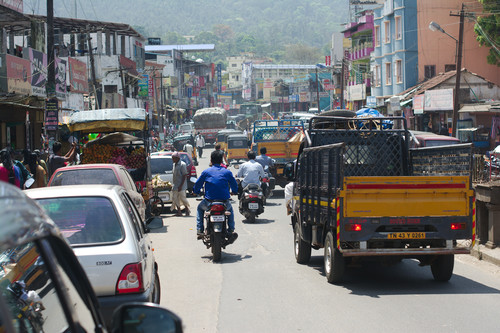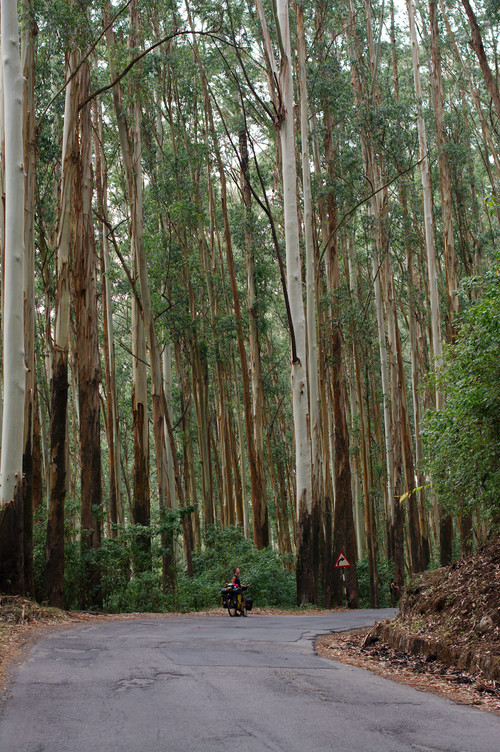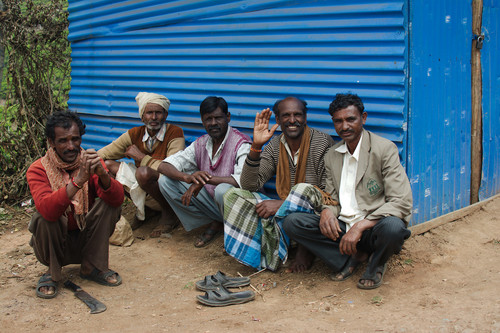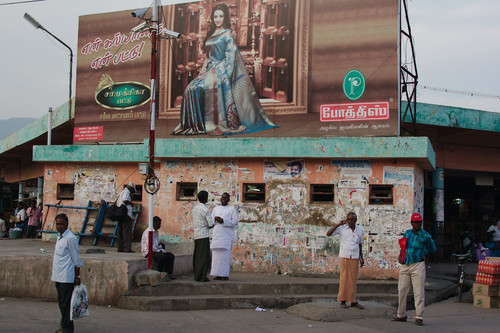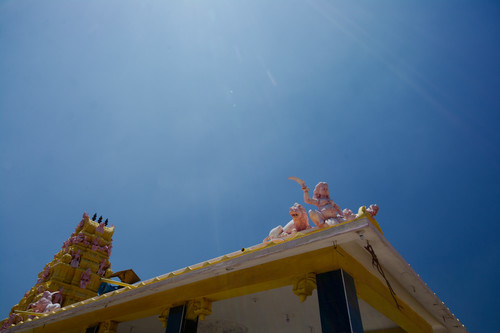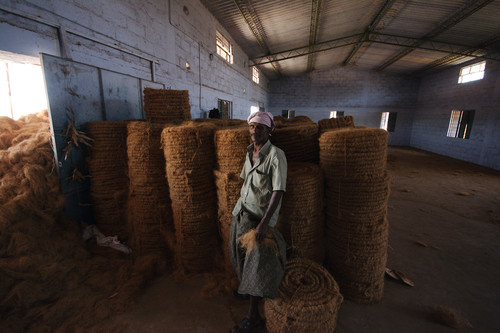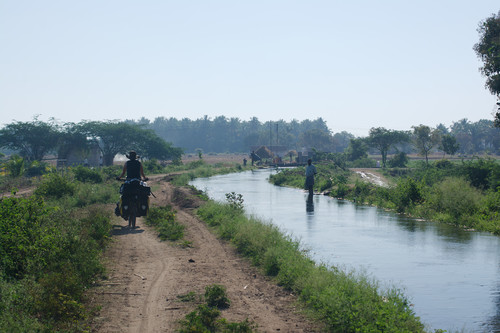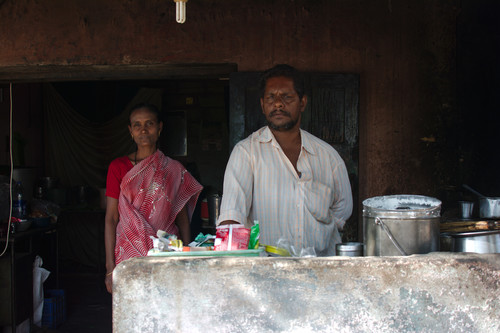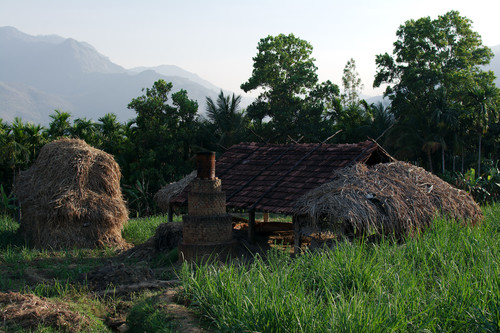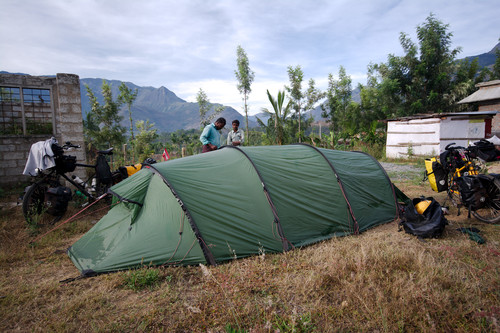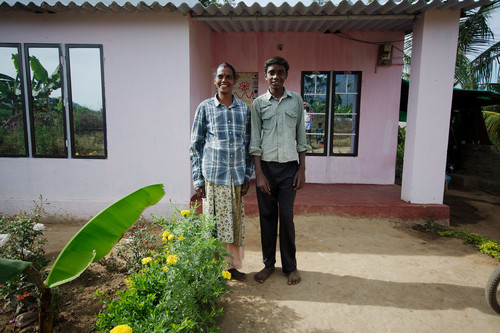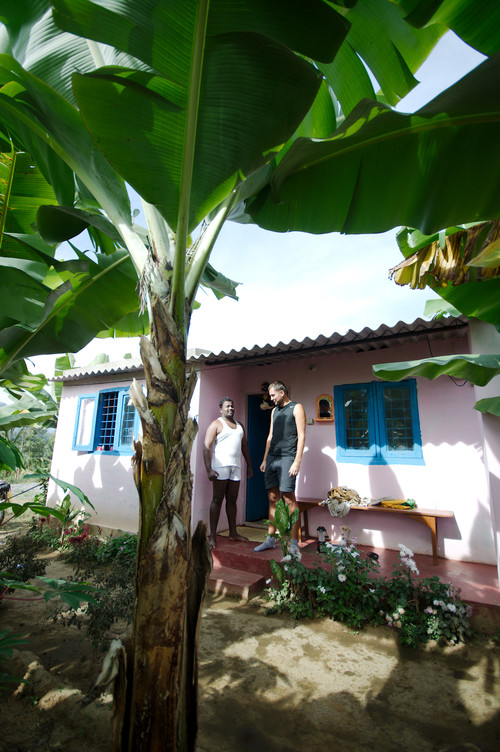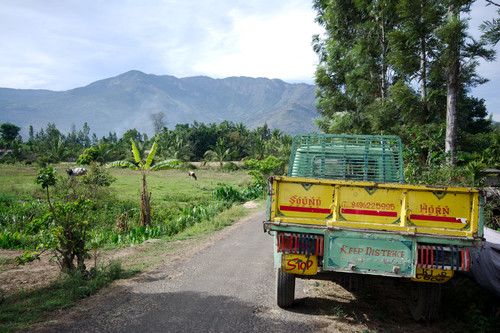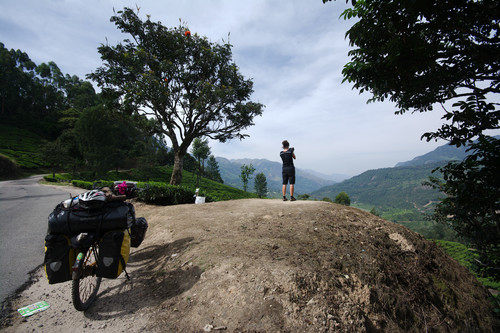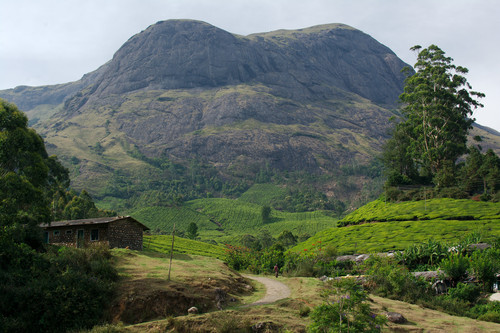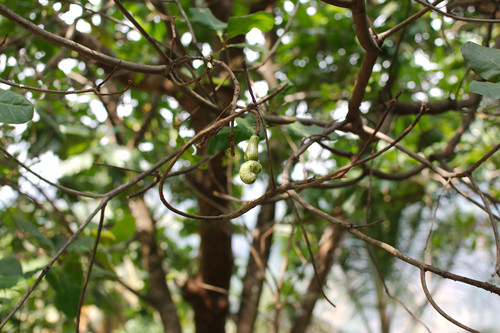Through hills and fields - Mudumalai to Kochi
distance: 456.14km
duration: 77h 4min
Daniela had plotted out a course through the renowned hillstations Ooty (Udhagamandalam) and Munnar. Both are in the mountaneous Western Ghats.
Ooty, lying in the region called "Nilgiri Hills", was originally inhabitated by the Toda, an ethnicity distinctivley different from the surrounding population, with their own religion and culture.
The area came into possession of the East India Company in 1799, and the mild climate of the Nilgiri Hills was found to be "unusually temperate and healthy" which made it ideal as a "resort of invalids". Soon Ooty/Udhagamandalam was established as a popular hill resort for invalided officers and other Europeans seeking cures.
Its popularity didn't abate after India gained independence. Today Ooty is a sprawling town with profilerating, unregulated housing and chaotic traffic. We could only imagine how quiet and serene it must have been a hundred years ago.
But the surrounding landscape is still quite impressive - it sure would be interesting to hike in the more isolated parts of the Nilgiri Hills, away from the tourist hotspots and "must-see" sights, where noisy city folks congregate, pose for pictures and drive off again.
We didn't linger though and continued downhill to the Noyyal River Basin - with nearly 2000m on 58km our longest continuous downhill since cycling out of the Pamir. The Noyyal River draws it's water from the surrounding mountains and flows through a huge flatland with vast palm plantations.
Located in this basin are also the metropolises of Coimbatore and Tiruppur and we navigated through the rural area in between to avoid the cities.
The region is a center of the indian textile industry, unfortunately also forced labour, where young unmarried women are hired for several years to work in the factories, severly limited in their freedoms and have to work under conditions which are illegal under Indian law, the wage is below 1 EUR/day. This scheme is called Sumangali.
Riding through this basin was rather eventless, on quiet backcountry roads we cycled through endless rows of coconut palms, which are cultivated for coir. On one occation we stopped by a coir production facility and the friendly workers showed us around.
Through the wonderfully quiet and picturesque Chinnar Wildlife Sanctuary we climbed to Marayoor, which lies in a green, shielded high valley. In the yellow light of the late afternoon the surreally green sugarcane fields and the soft mountains in the background, this spot appeared as if from a high-budget motion picture. It was a remarkable sight and one of the most impressive landscapes we had seen during our time in India.
We camped next to an abandoned dwelling in between houses of poor families, which provided us with water and unobtrusive attention and hospitality.
Munnar, a days ride with an elevation of 800m above Marayoor, lies within the Kannan Devan Hills and is a major tea producer. While the town itself does not offer much, the surrounding landscape is stunning.
We where still thinking about renting a flat or house to stay in India for a few months, but Munnars climate was a bit too cool for us. We borrowed a scooter and went to the next larger town, Adimadi, to look around for a home. All efforts proofed futile however, while we looked at a few places, nothing appealed to our taste.
One of the houses, surrounded by jungle on the road between Munnar and Adimadi was rented out by a young worker. He offered to move out with his family for the time we lived there. The building was quite nice, had electricity and a gas stove in the kitchen, but eventually we declined, as it's location was too remote and we feared we would feel isolated and lonely after a few weeks.
In the end, after 4 days in Munnar we left and cycled down to the coast, towards the Kerala Backwaters and Cochin, with 2.1 million inhabitants the largest city in the state of Kerala.
